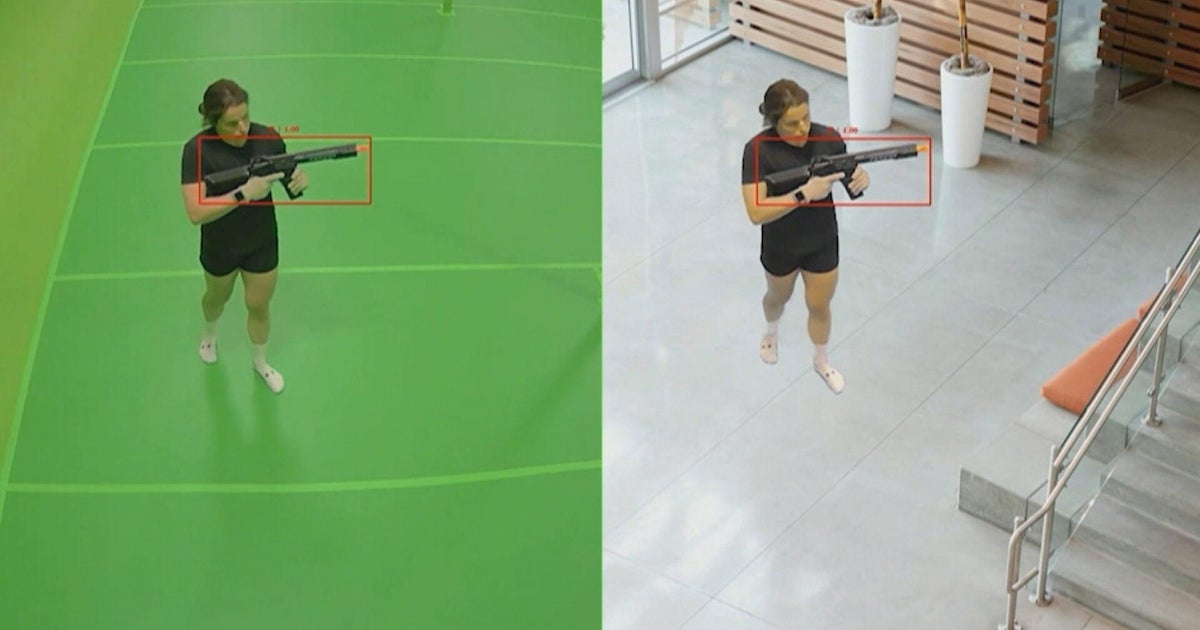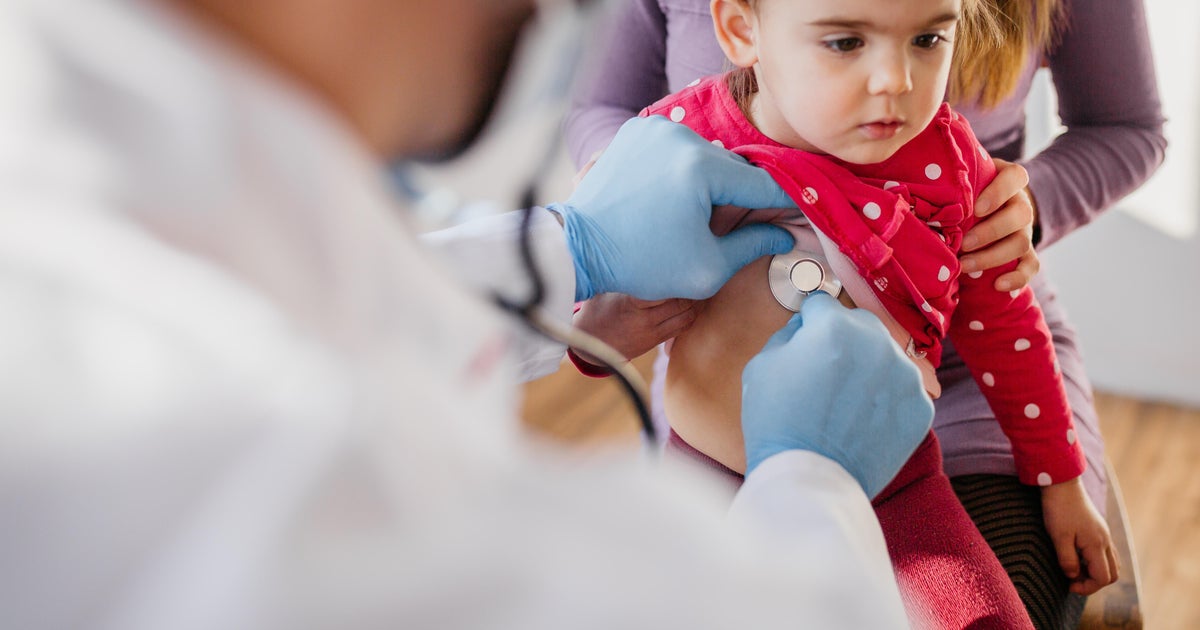CBS News
As “walking pneumonia” spreads, ER visits surge for sick babies

Nationwide rates of emergency room visits for babies with Mycoplasma pneumoniae are on track to surpass rates for school-age children, data from the U.S. Centers for Disease Control and Prevention shows, as doctors nationwide are grappling with a surge of “walking pneumonia” cases.
The new figures come from the CDC’s National Syndromic Surveillance Program, which gathers data on pneumonia-associated emergency room visits from U.S. hospitals.
While cases had been higher in school-age kids compared to other age groups, rates in babies have surged in recent weeks, and are now tied with older kids. According to the latest CDC data, for the week ending Nov. 2, 7.6% of emergency department pneumonia cases for babies 0-1 years old and children ages 5-17 years old resulted in Mycoplasma pneumoniae diagnoses.
“These diagnoses dropped a little after August, but remained high through early November. Of note, diagnoses among 0–1-year-olds have steadily increased throughout the fall without any subsequent decrease,” CDC spokesperson Jasmine Reed said in a statement Tuesday.
During the COVID-19 pandemic, cases largely disappeared. CDC officials had said that this year’s wave could be heralding a return to waves of Mycoplasma pneumoniae cases that occurred prior to the pandemic.
But this year’s trend has also been unusual, since cases had previously been thought to be common only in school-aged kids, not younger children.
“While we are seeing right now that it is presenting as a typical respiratory infection, we want to make sure that there isn’t something unusual going on with the bacteria itself or the way it’s showing up that might give guidance in how to treat and prevent it,” Dr. Adam Cohen, head of the CDC’s pneumonia branch, told Medscape News earlier this month.
According to Reed, while every U.S. region is seeing an increase in Mycoplasma pneumoniae cases, the CDC’s data suggests that since at least last month — when several states first began to raise concerns over the surge — the ERs of three regions specifically are seeing the highest levels of the bacteria.
One is in the South and spans Texas and its neighbors Arkansas, Louisiana, Oklahoma and New Mexico. The second is in the Midwest and includes Iowa, Kansas, Missouri and Nebraska. The third is in the Northeast and includes New York and New Jersey.
“Maybe it’s another one of those things that we didn’t see, got really suppressed during COVID, and now it’s coming back,” said Dr. Jennifer Nayak, division chief of pediatric infectious disease at Golisano Children’s Hospital in New York. “It just is definitely a really bad year for Mycoplasma.”
Nayak said that around a quarter of tests from the hospital’s microbiology lab have come in positive for the bacteria, which she says is unusually high.
The hospital has also seen an increase in patients needing to be hospitalized for the bacteria and who are battling a range of conditions — from lung issues to more complicated neurological complications — though they remain a fraction of overall cases.
“We’ve definitely seen more kids on the seriously ill side of the spectrum,” Nayak said. “Likely not because the bacteria has changed, but because our rates overall are just higher.”
She cautioned that while the recent increase has been unusual, there has not been a lot of data tracking the disease, so comparisons to previous waves of the bacteria have been challenging.
“Our tracking of Mycoplasma infections is suboptimal,” Nayak said. “This is not something that is reportable to health departments. It has not, until relatively recently, been closely tracked.”
A spokesperson for the New York State Department of Health said that it has also tracked a “marked increase” in Mycoplasma pneumoniae based on data from the state’s emergency rooms, compared to previous years.
While not all pneumonia cases warrant antibiotics, Nayak said testing can be important to give answers for children and their families battling persistent or serious pneumonia cases, as well as to help make decisions about how to treat the infections.
“The amoxicillin your child is getting because they might have an ear infection, or you think you’re treating another community-acquired pneumonia, those antibiotics will not be effective against Mycoplasma,” Nayak said.
CBS News
Inside the $3 billion school security industry as deadly shootings continue

Philadelphia — Rob Huberty’s operations center reads “military” — for good reason.
His company, ZeroEyes, seeks to fight the American scourge of school shooters. Its artificial intelligence technology scans security cameras for guns in hundreds of school districts, beaming images to a central command for rapid fire inspection. The software flags suspicious images to workers, who are then able to dispatch authorities with the press of a button.
Huberty, an ex-Navy SEAL, was struck by surveillance footage of the 2018 Parkland school shooter which showed his weapon visible on camera before the massacre occurred. No one was watching at the time, however, and the shooter went on to kill 17 people. ZeroEyes hopes to prevent that from happening by creating a window of opportunity to save lives before a shooting starts.
Just in the last four years, school shootings have killed more than 200 people and injured more than 600, according to a CBS News analysis of the K-12 School Shooting Database. Schools are spending hefty amounts on products like AI surveillance monitoring and collapsible safe rooms, while bulletproof backpacks and school supplies are marketed to fearful parents.
The ZeroEyes technology is pricey, costing tens of thousands of dollars annually. It also can’t spot hidden weapons, like a gun tucked in a backpack.
In Alabama, commercial contractor Kevin Thomas has a different solution: a collapsible, expandable safe room installed inside the classroom. It’s floor-to-ceiling, bullet-resistant and roomy enough for 30 students. Thomas started building the devices after 22 people were killed in the Uvalde school shooting in 2022.
Around $3 billion is spent on school security annually, according to market research firm Omdia, but Rutgers University professor Daniel Semenza says there’s “not very good research” to suggest the money is well spent.
“It’s a fear response, and it’s an empowerment,” Semanza said.
Thomas’s safe room has a hefty price tag of $45,000. He says he would donate one to every classroom and would put himself out of business if he could — not likely, as America’s schools edge closer to fortresses.
CBS News
2 killed in Ohio home explosion, cause under investigation

An explosion at an Ohio home Tuesday killed two people, injured one and sent debris flying throughout a neighborhood, authorities said.
It’s not yet known what caused the blast in Bethel, which happened shortly before 9 a.m. and set the home on fire.
“I just heard a big boom, and I looked out the window and it was gone,” a 911 caller said.
Several residents said the explosion shook their homes and caused minor damage.
“Felt the shockwave, fell out of bed,” neighbor Derrick Gullett told CBS affiliate WKRC. “Got dressed and went outside to see what happened. And as I went outside it was snowing insulation. Pieces of the house in my driveway, in my yard.”
Neighbors captured the fiery aftermath on cell phone video and also searched for victims.
“I was trying to listen, like, maybe if they were under the rubble,” neighbor Stephanie Young told WKRC. “Because the whole house was just like a pile of wood, insulation.”
A man and a woman were killed in the blast, Bethel Tate Fire Chief Christopher Cooper said. Another man suffered burns and was being treated at the University of Cincinnati Medical Center, he said.
“He comes running from the residence,” Gullet said of the survivor. “His hair was still on fire. We gave him water, tried to calm him down.”
The names of the three people have not been released, and it wasn’t immediately clear if any of them lived at the home.
“We’re sifting through debris, we’re trying to figure out where the fire started,” Cooper told reporters.
The Ohio State Fire Marshal will lead the investigation into the blast. Bethel is a village in Tate Township in southwestern Ohio.
CBS News
Bomb cyclone threatens the West while the East deals with drought

Watch CBS News
Be the first to know
Get browser notifications for breaking news, live events, and exclusive reporting.







